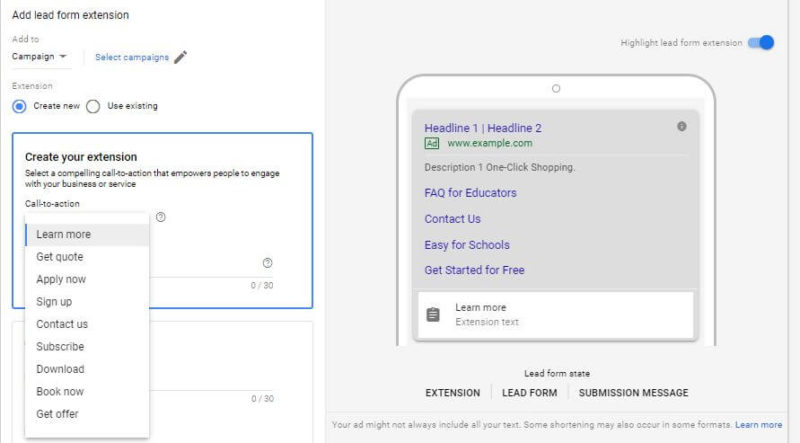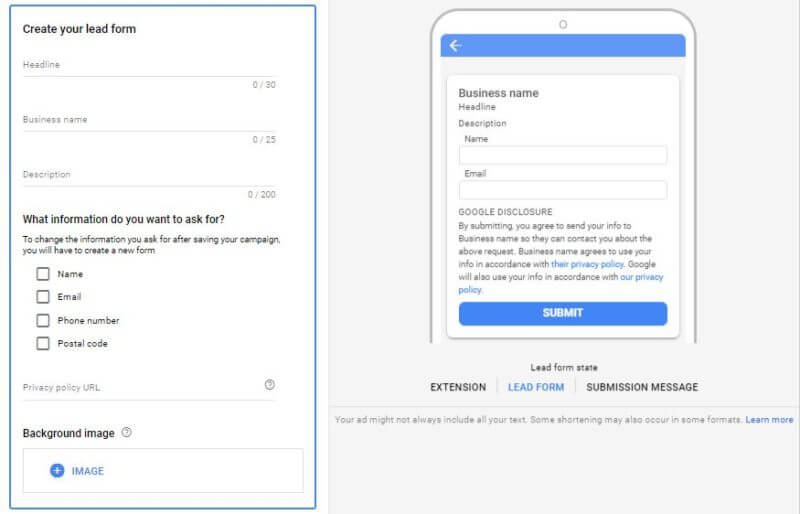
Google is beta testing a new ad extension for advertisers looking to capture leads from their text ad campaigns. Searchers can submit their information to request or download information from Google Search ads through the new lead form extension.
How it works. The lead extensions look similar to promotion extensions, displaying in a call-out box with an icon, in this case a clipboard. After you select the campaigns, you choose the call-to-action and enter extension text which can be up to 30 characters. This is what displays with the ad, as shown below.

Next, you’ll create the lead form as shown at the top of this article. The form includes a headline, business name and a description that can be up to 200 characters.
The information you can collect is limited to: Name, email, phone number and postal code.
You can add a header image as well. Finally, you’ll need to include a link to your privacy policy. Advertisers must also agree to Google’s terms of service.
You can customize the submission completion page that users will see after they submit the form with a description and call-to-action of either “visit website” or “download”.
Lead data can be delivered via a webhook to your customer data management or CRM system to directly receive your collected leads in real-time.
Why we should care. The ease of using lead extensions could help advertisers generate more leads from their search ads. Advertisers will want to closely monitor the quality of these leads, however.
This is not the first time Google has tried capturing lead data straight from search ads. In 2010, Google floated what it then called contact form extensions. Leads were sent to advertisers via email. It never came out of beta. In 2011, it tried again with cost-per-lead ads that let users submit their phone number or email in from the ad to request for more information. That never came out of alpha, it seems.
Some advertisers may balk at the limited amount of data that can be captured in the latest version of the leads form extension, but the integration of webhooks should help reduce the friction of transferring lead data to sales systems, and the new option is designed for mobile experiences.
Hat tip: Steven Johns

